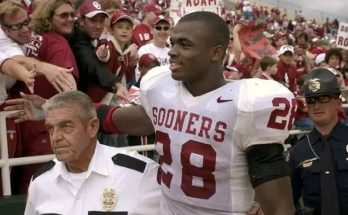On a balmy evening under the iconic lights of Dodger Stadium, Yoshinobu Yamamoto again took the mound and reminded everyone why he’s quickly becoming the ace not just of the Dodgers, but arguably of all of Major League Baseball. It was a performance that blended precision, poise, and the type of dominance that turns heads—an eight‑strikeout, one‑run, seven‑inning outing against the struggling Chicago White Sox that felt more like a surgeon working a scalpel than a pitcher toeing the rubber (mlb.com, reuters.com).
This start was far from an anomaly; it was a snapshot of a pitcher truly in his element. Since donning the Dodgers fashion for the 2025 season, Yamamoto has steadily built a ledger of excellence. Coming off an opening seasonal stretch where he posted a sparkling 1.06 ERA with 43 strikeouts over 34 innings and grabbed National League Pitcher of the Month honors in April (en.wikipedia.org), he has maintained a firm grip on elite form. His seasonal line, as of early July, stood at 8‑6 with a 2.51 ERA, 109 punch‑outs against 32 walks, and a tidy 1.01 WHIP (mlb.com).
Delving into his approach, what stands out is the violent beauty of his splitter. He leans on a fastball-splitter combo—fastball around 37% usage, splitter approximately 26%—and the results are devastating: a .148 opponent batting average and a 41% whiff rate on that splitter alone (southsidesox.com). His splitter isn’t merely another off‑speed pitch; far more thrillingly, it’s a weapon of shutdown persuasion, often eliciting swings so completely fooled they look nearly in slow motion on replay. Watching it drop off the table and miss bats is akin to witnessing a trick magician repeatedly pulling off the same breathtaking illusion.
In that White Sox showing, he walked just one while fanning eight. It felt like a portrait of efficiency—not an ounce of fat in any inning. He marched through seven frames with just three hits and one earned run surrendered, and in sizzling heat, under intense pressure to keep the Dodgers rolling, Yamamoto smothered what little White Sox offense mustered . Beyond the numbers, there was the intangible: a calm serenity even while working deep into the game. His composure announced, “I’m in charge here.”
What’s intriguing about this outing is that it wasn’t a statement born out of weakness—Chicago was fresh off a slump and bottom of the barrel, no doubt—but it was a reinforcement of Yamamoto’s capability. He’s taken every start seriously, regardless of opponent, but this one felt purposeful. And when a pitcher’s dominant performance pushes his team past a struggling opponent, what’s captured is less about overpowering and more regarding consistency and competitive mindset. It’s what separates merely good pitchers from the great ones.
Earlier in the year, back on June 25 in Denver, he tossed five scoreless innings against the Colorado Rockies before a rain delay ended his night—a game where he struck out six and allowed just one hit and one walk over 56 pitches (mlb.com). That night wasn’t an isolated flash of brilliance either; it was part of a pattern. His overall June, although peppered with tough stretches—like a few subpar outings in mid‑June—nevertheless included dominant flashes and was followed by this shut‑down start versus Chicago. He’s never been a pitcher who wavers wildly; his peaks and troughs are modest, but his peaks are top‑tier.
What’s most compelling is Yamamoto’s mental maturity. Even after a rough outing against San Francisco two weeks ago where control deserted him—five walks, four runs, short leash—the post‑game reaction underscored a healthy intensity. He said he was “not satisfied with any pitch,” a sign of a competitor who sets a high bar, regardless of his résumé (reuters.com, timesofindia.indiatimes.com). That kind of self‑critique helps fuel the next outing, and he’s consistently delivered after each one of those tougher starts.
Consider too his early‑season showcase in Tokyo. Opening the season against the Cubs on their home soil, he worked five innings, allowed just one run on three hits, and struck out four—all before heading off into the history books alongside Shohei Ohtani and Roki Sasaki as part of MLB’s first all‑Japanese Opening Day pitching matchup (en.wikipedia.org). Shortly after, in Los Angeles on April 18, he punched out 10 in seven scoreless innings against the Rangers (en.wikipedia.org). When press and pundits swirl that into “front‑running Cy Young candidate territory,” well, they aren’t exaggerating. A New York Post piece from June reviewed his first 11 starts, showing league‑leading 1.96 ERA, 10.5 K/9, and stellar control—5.3 hits per nine, 2.8 walks per nine, WHIP of 0.906 (nypost.com).
This isn’t just a narrative of overpowering but of evolution. Yamamoto’s control has tightened since his NPB departure. In Japan, he was already a terror—just ask the Orix Buffaloes’ loyal fans—but in MLB, he’s refined: fewer walks, more strikeouts, better sequencing. It’s one thing to rack up Ks; it’s another to do it efficiently, without bloating pitch counts or weakening late. In 17 starts, he has 109 Ks on 96.2 innings, a near one‑per-inning clip, yet he kept a tidy walk count at 32—dominant, deliberate, dialed‑in .
Manager Dave Roberts has been effusive, calling him possibly the best pitcher in the NL—or even MLB—after some of these starts (as.com). That’s lofty talk, but the mound results back it. And of course, there’s context—this is one of the deepest Dodgers rotations ever, featuring Clayton Kershaw, Tyler Glasnow, and others. Yamamoto’s name, though, seems to rise above even those, marking him as the axis.
What does all this look like to a fan at the ballpark or tuning in on TV? It looks easy. Even electric. One fastball, then splitter; plug-and-play out after out. Hitters flailing. Catcher dusting off his glove while gear flows from the mound. Managers nodding up from the dugout. Stadia falling hush—or erupting—on each strikeout. It all feeds into a sense of theater, one where Yamamoto is lead actor and conditions—weather, day, opponent—fade to background.
His start against Chicago also underscored his ability to rise above any hint of pressure or hype. The Dodgers offense provided a comfortable lead: six runs were scored early, and Shohei Ohtani cracked his 30th homer of the year (dodgersbeat.com, reuters.com), and the stage was set. Yamamoto simply ran the show. In performance parlance, it was called a march. He didn’t have to battle pitch‑count blues. He didn’t need to dig deep from the stretch. He controlled it from start to finish—the sort of outing that becomes reference material.
Baseball, as it’s often noted, is a game of failure. Pitchers fail seven out of ten at‑bats. Hitters fail seven out of ten pitches. But Yamamoto’s recent stretch is the exception to that rule—and not by a margin. When he faces a lineup, the hitters aren’t just failing; they’re chasing, guessing, under pressure, overmatched. His arsenal is deep: fastball, splitter, curveball, cutter, sinker, slider . He sequences them with purpose. He places them with precision. Hitters Time To Contact is delayed, or erased. He isn’t just winning; he’s imposing a will.
Right now, the stat sheet is lush. A sub‑2.60 ERA, five starts of double-digit strikeouts, multiple quality starts, multiple dominant ones. Opponents are hitting around .180–.200 off him—and that’s generous. FIP, xFIP, strikeout rate, walk rate, pitch efficiency—they all hover in top percentile. Yamamoto’s layering a statistical dynasty on the back of raw feel and feel‑good film.
Beyond personal excellence, he’s a big-game pitcher. In the Tokyo series opener, he was sharp on foreign soil. In high-profile early‑season games—Colorado, Chicago, Texas—he’s affirmed himself. And you could argue the game against the White Sox is simply another piece of tape on how he dominates no matter context. As a competitor, that consistency speaks volumes. He’s not a Coliseum pitcher or a cold‑weather pitcher; he pitches in all scenarios and shines.
Baseball loves its milestones—Cy Young buzz, $300 million contract chatter (the Dodgers signed him to $325 million back in December 2023) , talk of NL MVP? Maybe hyperbole. But hats off: those narratives begin with microfiber grip and split‑finger drop and extend into conversations around history, dominance, legacy. Already Yamamoto has been likened to Dodgers legends; whispers about whether he’ll break club records or tilt the franchise’s rotation ceiling. He’s showing signs of doing just that.
To expect perfection would be foolish, but to expect excellence seems more than reasonable. Even amid the occasional bout of wildness—San Francisco start, mid‑June rough patches—he recovers, reflects, and delivers again. That paints the picture of more than a spike in performance—it suggests sustainability.
As he rounds out his next few starts, the questions vie: Can he maintain sub‑3.00 ERA into August? Will he climb to 200 strikeouts? Can he pitch in the postseason and shake free of any jitters or cold fingers? If his recent track record is any signal, the answer feels increasingly likely to be yes. For now, though, what we have is a pitcher firmly in command, an electric presence on the mound, and a performance streak that echoes across Dodger Stadium and beyond. Yoshinobu Yamamoto isn’t just good—he is staking claim as one of baseball’s current greats, and his recent games, pinnacle upon pinnacle, are the evidence.



